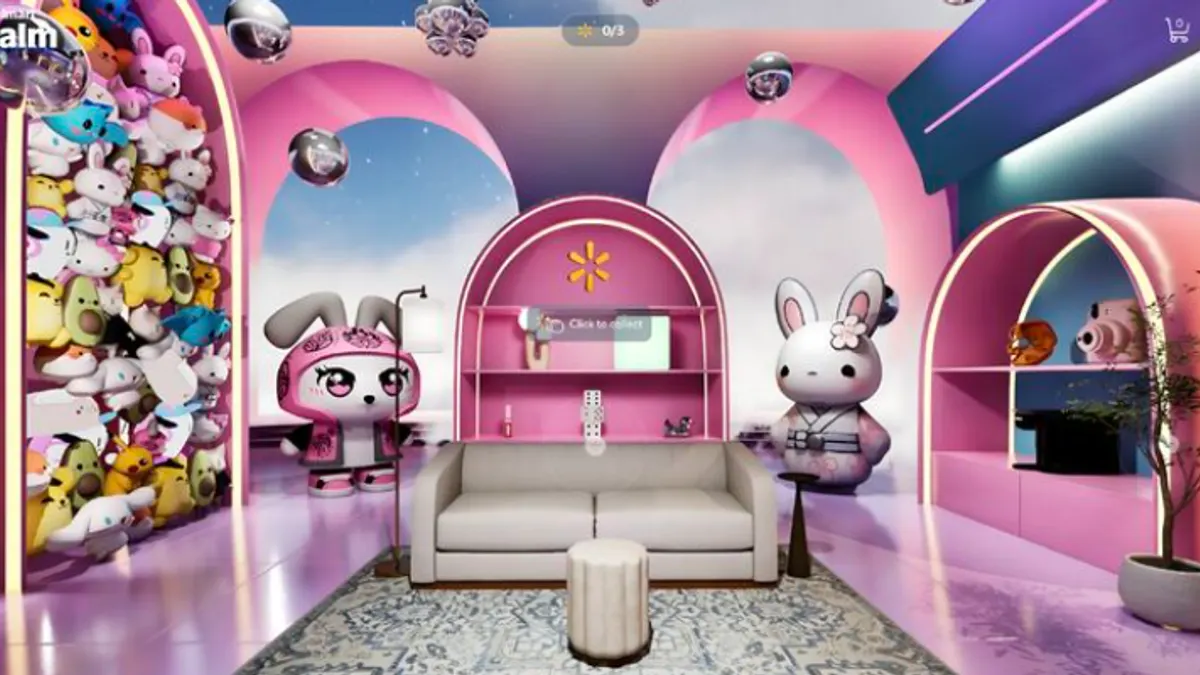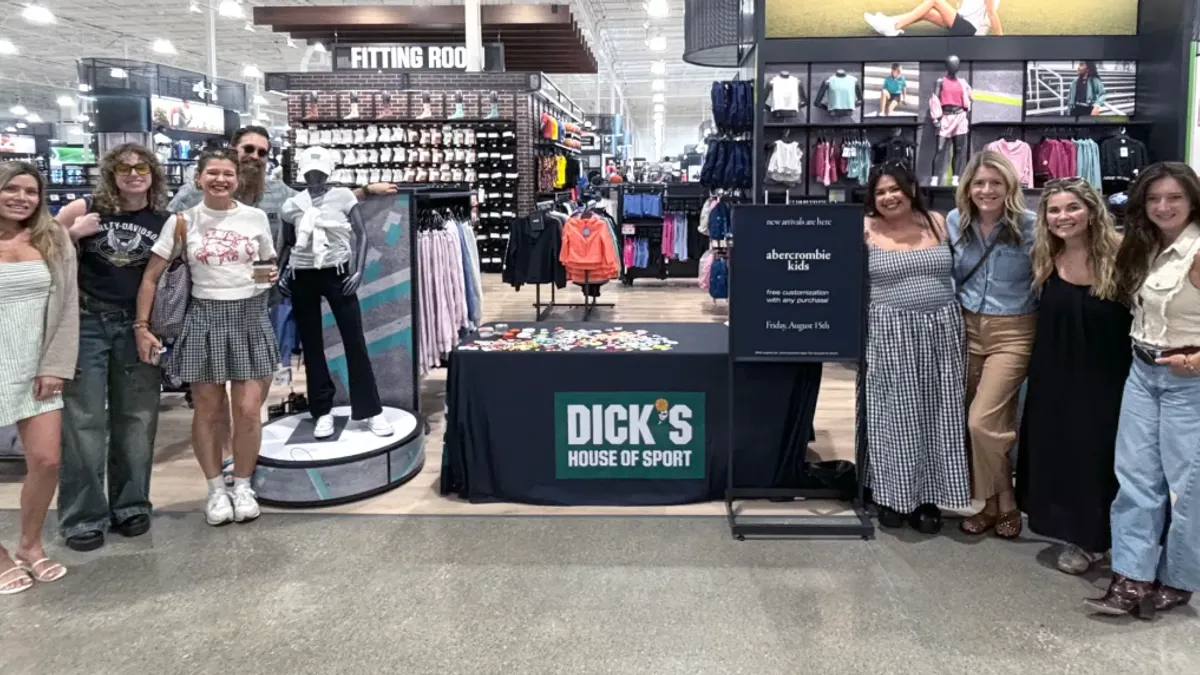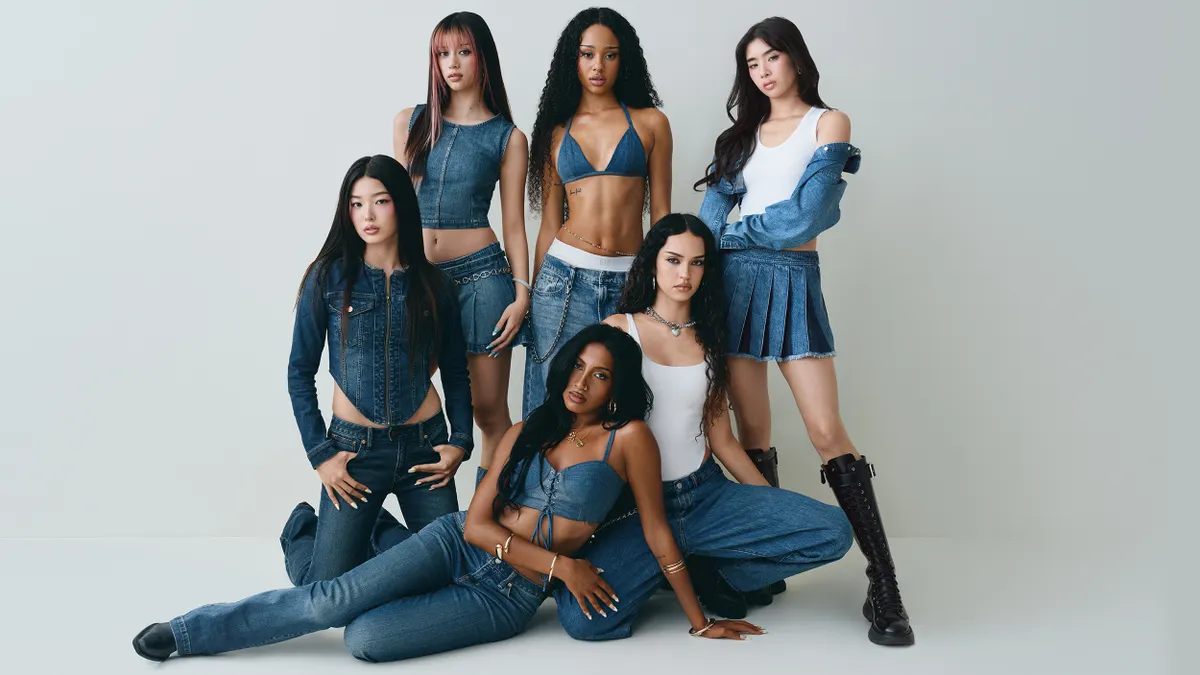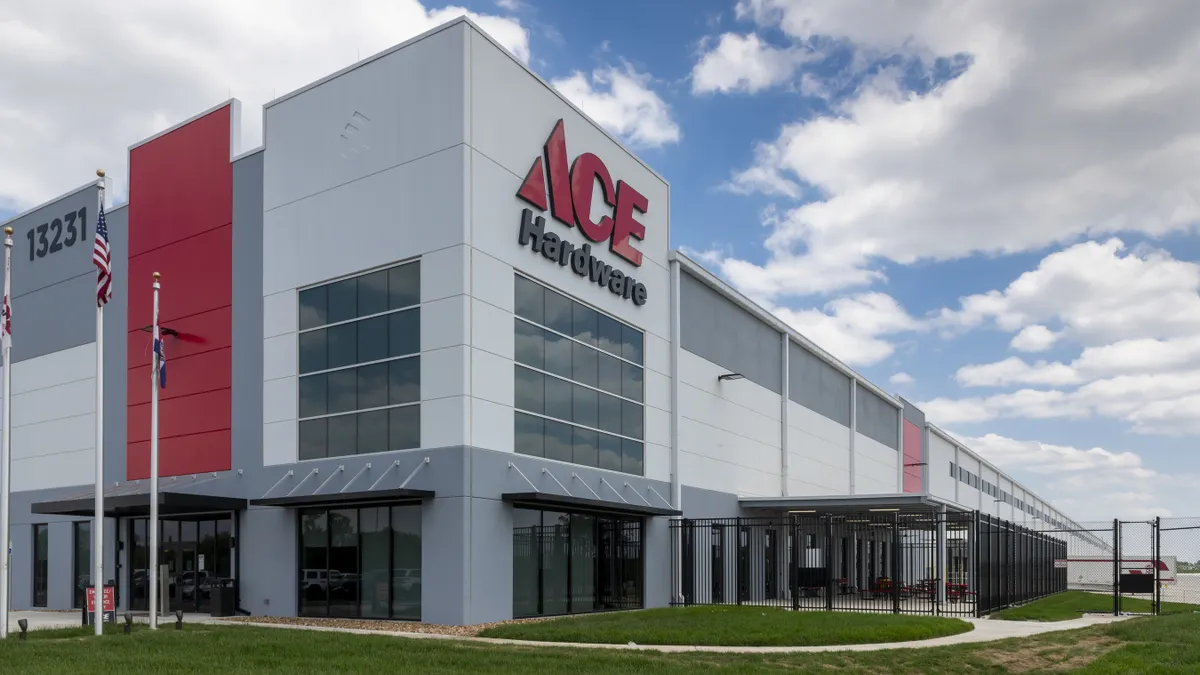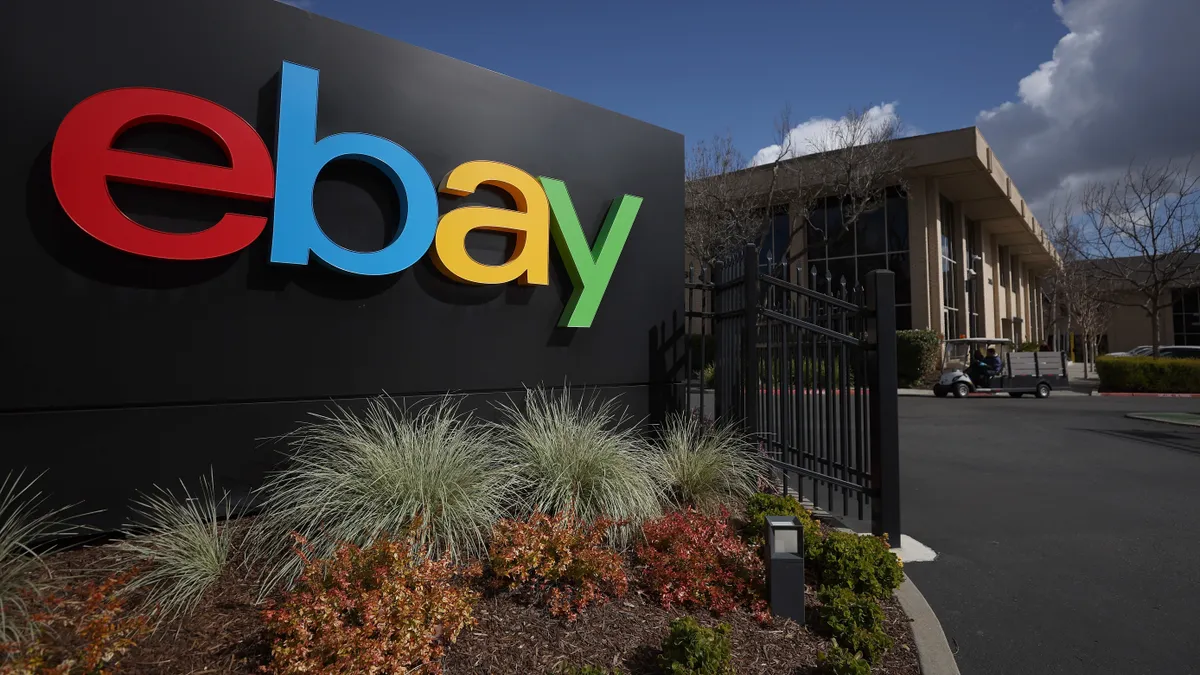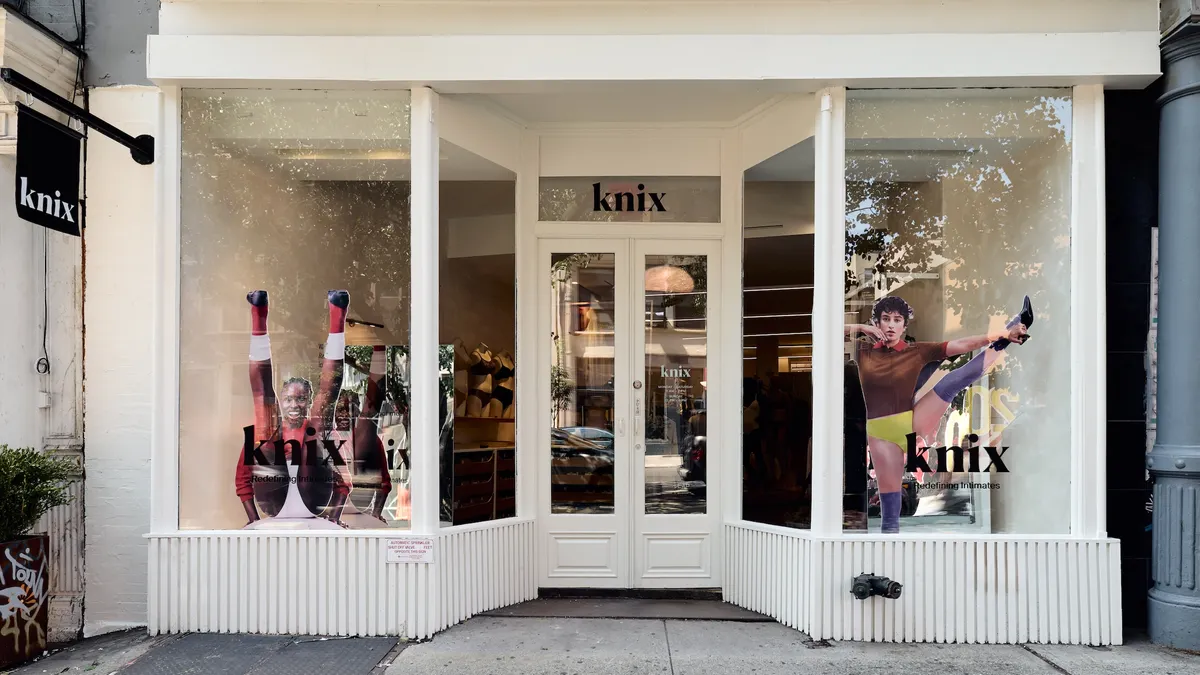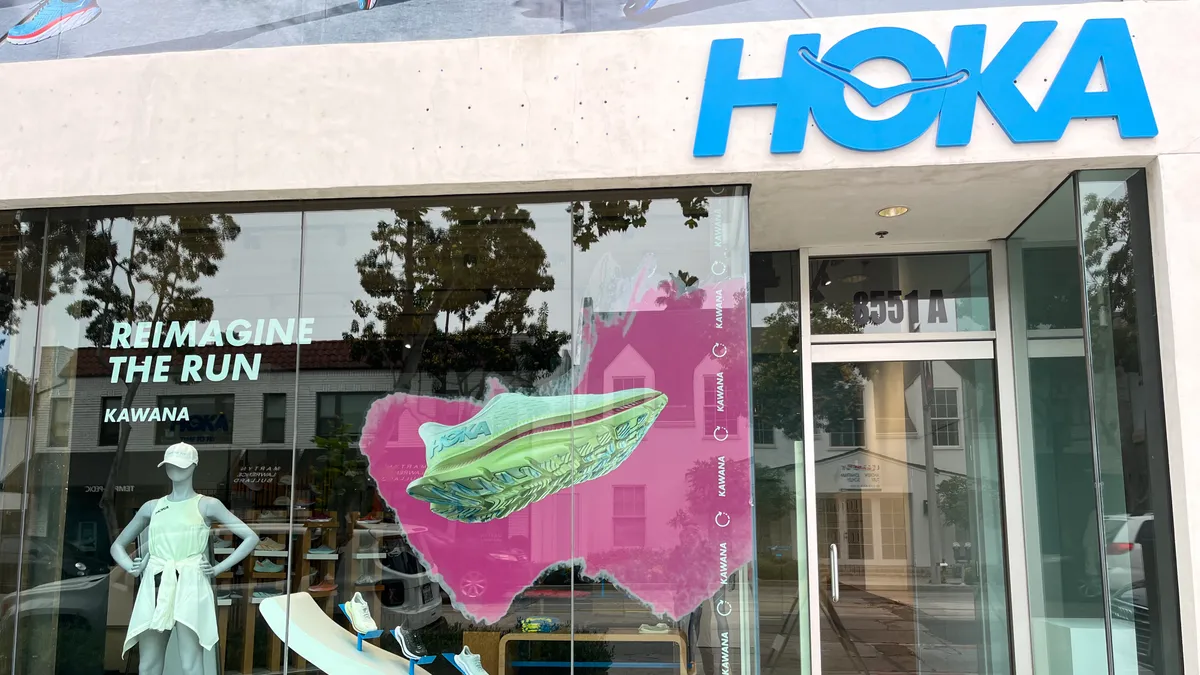Virtual reality has been in the making for at least 30 years, but Best Buy is betting that brick-and-mortar demonstrations may be what the technology needs to bump it into primetime.
Ahead of this year's holiday season, Best Buy announced it would dramatically expand live demos of the Facebook-owned Oculus Rift virtual reality headset from 48 stores to 500. The electronics retailer has also begun in-store demonstrations in anticipation of the Oct. 13 launch of the Sony PlayStation VR game system.
Best Buy is quietly setting itself up to be the premier physical destination for virtual reality gear. As the only U.S. brick-and-mortar retailer selling the Oculus Rift headset, the retailer is uniquely positioned to use demos to drive more traffic into its stores and ultimately increase sales.
Many analysts believe that after years of unmet hype, the VR market is set for strong growth in the next several years, with a recent report predicting over $50 billion in VR hardware sales by 2021. Yet long-standing issues have held VR back before, including equipment cost, availability and uncertain customer interest. An Oculus Rift unit retails at a pricey $599, and Best Buy has been careful to offer "very limited quantities" of the product
Still, analysts say the most powerful sales tool for VR gear is allowing potential customers to experience it first-hand. In doing just that, Best Buy could become the model for how other brick-and-mortar retailers could sell VR gear — and help push VR to its tipping point.
Cautious optimism
Best Buy has been careful not to over-promise the effect that Oculus Rift sales — or the VR market in general — will have on its bottom line.
Its approach to promoting and selling the Oculus Rift reflects the retail sector's increasing reliance on experiential marketing, the notion that allowing customers to experience a product can increase sales. Best Buy is cagey about its expectations for the in-store demos, but analysts contend such demos can transform consumers from VR-curious to VR-believers.
Best Buy CEO Hubert Joly touted the expansion of live Oculus Rift demos during the retailer's second quarter earnings call, suggesting with tempered enthusiasm that VR products in general could help the retailer increase store sales in the future.
“By holiday, we expect to be selling an expanded assortment of virtual reality products in the vast majority of our stores, and more than 500 stores will be equipped with demo stations, so customers can try out this exciting new technology,” Joly said on the call. “We believe virtual reality has the potential to contribute to our growth in the future, but I am not expecting a material financial impact this year, given the timing of launches, inventory availability, and the fact that we are early in the cycle.”
Danielle Schumann, a Best Buy spokeswoman, told Retail Dive in an email that the demo expansion was not necessarily based on the reception of the initial demo launch in May. "Virtual reality is exciting technology, which is why it was always part of the plan to roll out more demos," Schumann said. Best Buy declined to answer further questions for this story related to its Oculus Rift inventory or the expected impact the demos could have on sales and store traffic.
The retailer may be cautious about giving the expansion too much credit, but Ben Wood, chief of research at CCS Insights, a consultancy firm that tracks the VR market, told Retail Dive that Best Buy's demos are “extremely important” in the grand scheme of things.
“There is no substitute for trying VR,” he said. “It is almost impossible to articulate the experience without trying it. This is why having easy-to-use, compelling demos in physical retail is going to be so important for this technology.”
Leveraging the in-store experience
In-store demos have the potential to appeal to a segment of consumers increasingly curious about VR, which CCS Insights' Wood says could also drive more traffic into stores.
The Oculus Rift demos at Best Buy take place in the retailer’s Intel Experience store, one example of its store-within-a-store strategy that aligns well-known technology brands with experiential in-store marketing campaigns to enable potential customers to discover new products and services by trying them out firsthand.
CEO Joly has described in-store experiences as a “very important component of our strategy.” Best Buy CFO Corie Barry also said in a recent earnings call that the store-within-a-store concept allows the retailer “to showcase a technology in a very unique way.” Barry clarified that Best Buy doesn’t break out revenue connected to the different experience stores.
Best Buy may want to use the Oculus Rift demos to tap into the sort of impulse buyers who go to Best Buy for a new laptop and come home with other new gadgets they've discovered, according to Beck Besecker, CEO and co-founder of Marxent, a company that works with retailers and others to use VR as a marketing and operational tool.
"It’s certainly a way to draw people into the store. And once they’re inside, they’re likely to buy things — which may not even be an Oculus necessarily," Besecker told Retail Dive. "Brick-and-mortar is dependent on that impulse buying behavior, so they could be using the Oculus to drive people in."
But CCS Insight’s Wood believes the jury is still out on exactly how big of an in-store traffic driver VR could be. “VR remains a niche opportunity versus mass market consumer electronics, or a device such as the iPhone 7, which has tremendous consumer pull," he said. “But we do believe there is a segment of consumers who are certainly interested in trying it, and that could see them visiting a store to test the technology.”
'A nod to market readiness'
Best Buy's dominance in brick-and-mortar virtual reality sales could prove especially significant to the VR market in general. Besecker called the move “a nod to market readiness,” adding that “Best Buy’s backing makes VR experiences more accessible to people who may not otherwise try it."
Analysts say there are other reasons to believe the VR market is about to surge. CCS Insights reported in an August forecast update that it expects sales of dedicated VR headsets, a category that includes the Oculus Rift and HTC Vive, will reach 21 million units sold by 2020 — a more than tenfold jump from the 2 million such devices expected to be sold in 2016.
Worldwide sales of smartphone-based VR headsets represent an even larger market in terms of volumes of units, with CCS expecting 72 million such devices to be sold by 2020. But revenue-wise, the Oculus Rift and its ilk could account for 85% of an $11 billion market by 2020 because they represent a smaller part of the market in terms of volume, but they cost much more than smartphone-enabled VR gear.
Forrester Research forecasted that the U.S. market for high-end dedicated VR headsets and mid-priced smartphone-based VR gear will reach 52 million units sold by 2020, according to the May 2016 report, “The Coming Wave of Virtual Reality," written by J.P. Gownder, vice president and principal analyst for infrastructure and operations professionals at Forrester.
Wood, of CCS Insights, believes numerous factors are at play in driving this imminent market growth. He noted that Google has aligned with various partners in campaigns to give away its Google Cardboard VR platform, since it sees VR content and applications as the real revenue driver. McDonald’s has given away “Happy Goggles” VR headsets with Happy Meals in Sweden, and Kellogg’s runs a similar campaign through its family rewards program. Samsung Gear VR, which uses Oculus technology, also has been backed by big marketing money and promotion from Samsung, Wood said.
Much more VR content is quickly becoming available. In recent days, Sony Picture and Reality One partnered to produce VR content, while HTC lent more support to its Vive VR headset by opening a new app store. Facebook and others have also been urging the creation of user-generated content for VR.
These efforts heighten awareness of VR technology overall, Wood said, and should drive adoption of dedicated VR devices. In this context, Best Buy’s demos have the potential to accomplish both of those things.
Challenges to overcome
While the VR market is generating some fresh excitement, and Best Buy is doing its part, the market also has its own history of letdowns. Through its early development years in the 1990s and 2000s, the quality of the VR experience seemed perpetually unable to meet the promise of the pop culture touchstones that helped to hype it, such as the movie “The Lawnmower Man” and William Gibson’s book “Neuromancer.”
"The early interest in VR died because the technology wasn’t able to deliver on the promises that people were making about it," Gownder wrote in his report for Forrester. "Today, the technology is 95% there."
While the technology is solid, the cost could be more consumer-friendly. VR has always been an expensive proposition — and that remains the case. Best Buy sells the Oculus Rift for $599, and the HTC Vive is priced as high as $800 elsewhere. Meanwhile, smartphone-based systems are cheaper, though the Oculus Rift and Vive are considered to deliver a superior quality VR experience. There's also the cost of the high-end PCs that users need to power their VR experiences, games and other content if they don't already have robust hardware.
And after all these years, it's still difficult to ascertain the true level of consumer interest in VR — is it only for hardcore VR gamers and true VR enthusiasts, or will others be interested?
Paula Rosenblum, co-founder and managing partner of RSR Research, said getting more people "to actually see what VR can do" is important for the technology, but suggested that Best Buy faces a conundrum in appealing to consumers beyond those already very interested in VR. She questioned the assumption that the Oculus Rift on its own can drive traffic into stores.
"I, for one, have never had a headset on," she said. "But I don’t think I’d go to a store to just try them. So it’s a bit of a circular problem. I don’t know how good the graphics are, so I haven’t much interest in buying one. I just keep assuming it’s like IBM’s old “Second Life” app, which had pretty awful graphics. I’m not sure how you get past that."
Rosenblum also has reservations about the cost. "I don’t see parents giving their kids $600 Christmas gifts," she said. "I am still unsure beyond the gaming market who the target market for these headsets is."
Perhaps Best Buy will have an answer after this holiday season.
This story is part of our ongoing coverage of the 2016 holiday shopping season. You can browse our holiday page for more stories.







